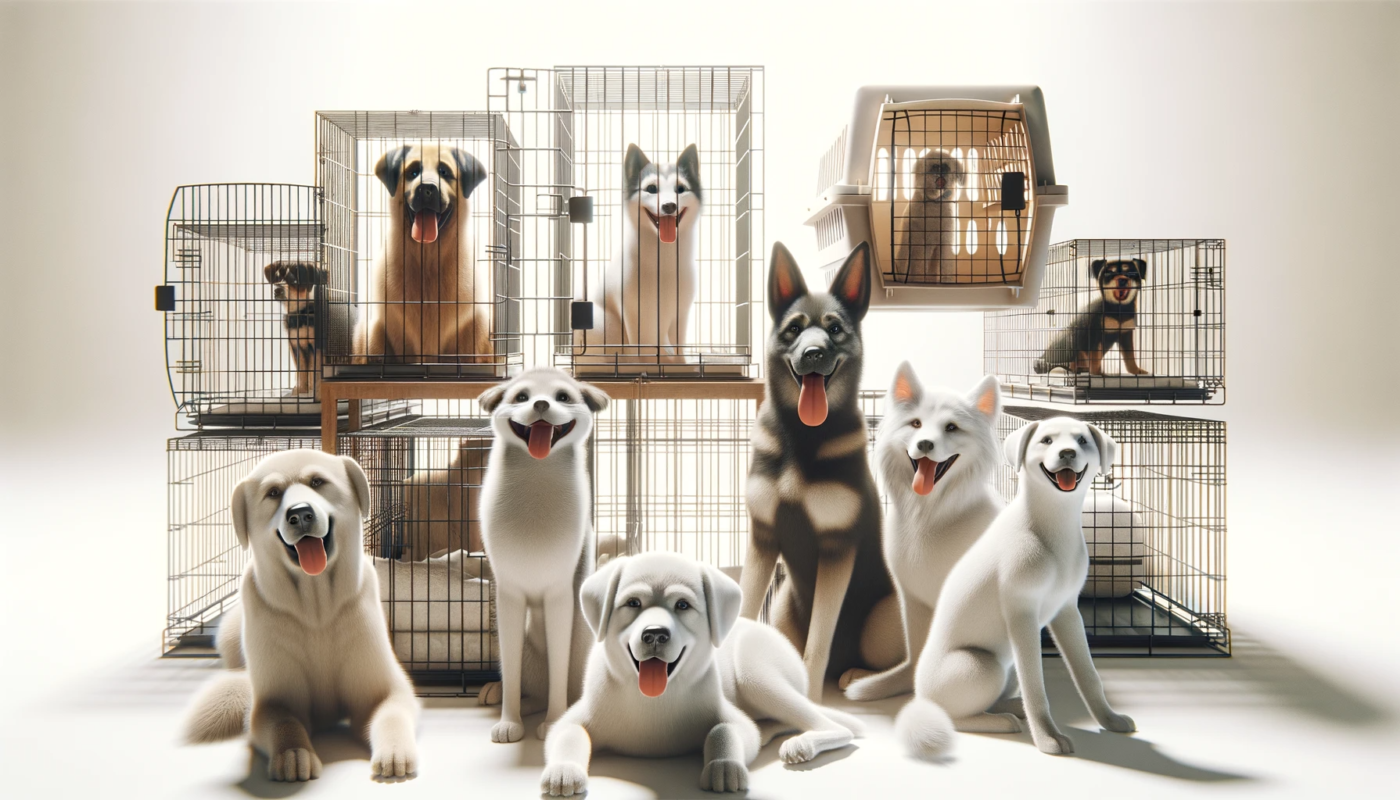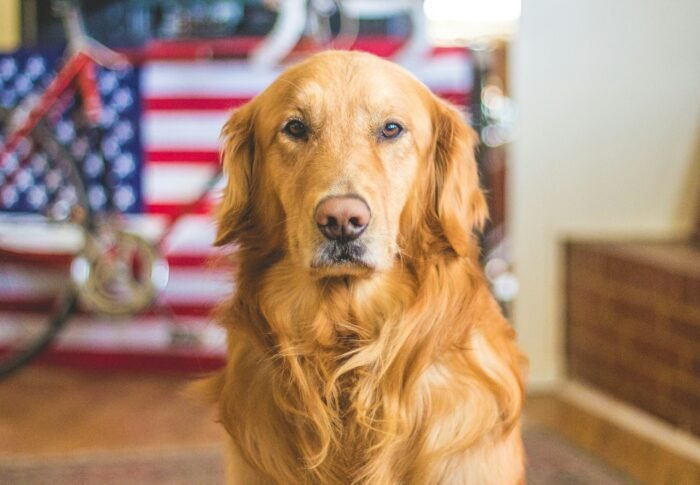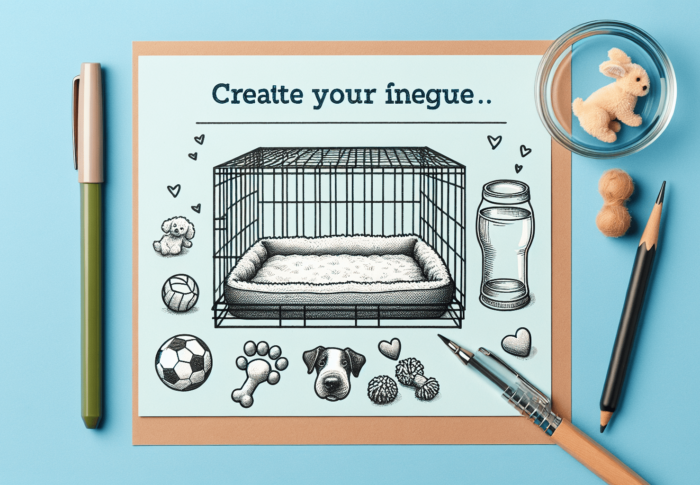
Effective Crate Training Techniques for Separation Anxiety
If you’re a dog owner who has struggled with separation anxiety, you’re in the right place. This article focuses on effective crate training techniques specifically designed to alleviate the stress and anxiety your furry friend may feel when left alone. We understand how important it is to create a safe and comfortable environment for your dog, and we’re here to guide you through the process of crate training to help your pup feel secure and content. Let’s explore the world of crate training for separation anxiety together!

This image is property of images.unsplash.com.
Find products like these on Amazon!
Choosing the Right Crate
Size of the crate
When it comes to crate training, choosing the right size of the crate is crucial. You want to select a crate that is large enough for your dog to stand up, turn around, and lie down comfortably. However, it shouldn’t be too big that your dog has ample space to create a separate bathroom area in one corner. A crate that is too large may not provide the cozy, den-like feeling that dogs tend to prefer.
Type of crate
There are various types of crates available in the market, including wire crates, plastic crates, and soft-sided crates. Each type has its own advantages and disadvantages. Wire crates are popular as they provide good ventilation and visibility, while plastic crates offer a more enclosed and secure environment. Soft-sided crates are lightweight and easy to transport, but they may not be suitable for dogs who are prone to chewing or scratching. Consider your dog’s needs and behaviors when choosing the type of crate.
Location of the crate
Deciding on the location of the crate is also an important aspect of crate training. Place the crate in a quiet area of your home where your dog can have some privacy. Avoid placing the crate in high-traffic areas or near loud appliances, as it may cause unnecessary stress for your dog. Additionally, make sure the crate is not in direct sunlight or in a drafty area to ensure your dog’s comfort.
Introducing and Familiarizing the Crate
Creating a positive association
To make the crate a welcoming space for your dog, it is essential to create a positive association with it. Start by placing treats, toys, and blankets inside the crate, enticing your dog to explore and investigate. You can also feed your dog their meals near the crate or provide them with special treats that they only receive when inside the crate. By associating positive experiences and rewards with the crate, your dog will begin to see it as a safe and comfortable place.
Gradual introduction to the crate
Introducing the crate gradually is key to ensuring that your dog feels comfortable and at ease with it. Begin by leaving the crate door open and allowing your dog to explore it freely. Encourage your dog to go inside by dropping treats or toys near the entrance and gradually move them deeper into the crate. As your dog becomes more comfortable, you can start closing the door for short periods of time while you are present.
Using treats and rewards
The power of treats and rewards should not be underestimated when it comes to crate training. Use treats to reward your dog for entering and staying in the crate, as well as for exhibiting calm behavior while inside. Consider providing interactive toys or treat-dispensing toys to keep your dog occupied and mentally stimulated in the crate. By providing positive reinforcement, you can help your dog associate the crate with positive experiences and ultimately reduce separation anxiety.
Find products like these on Amazon!
Establishing a Routine
Consistent crate schedule
Establishing a consistent crate schedule is important for crate training. Dogs thrive on routine, so having a set schedule for crate time helps them understand what is expected of them. Set specific times for your dog to go in the crate, such as during meal times or when you need to leave the house. Stick to this schedule as much as possible to create a sense of predictability and security for your dog.
Building up crate time
Start with short periods of crate time and gradually increase the duration as your dog becomes more comfortable. Begin by closing the crate door for a few minutes while you remain in the same room. Slowly extend the time, always keeping an eye on your dog’s behavior and comfort level. It’s important to remember that crate time should never be excessive or used as a form of punishment. The goal is to create a positive association with the crate, not to lock your dog away for extended periods.
Incorporating crate time into daily routines
In addition to establishing a consistent crate schedule, it’s beneficial to incorporate crate time into your dog’s daily routines. For example, you can have your dog spend time in the crate when you need to take a shower or perform household chores. By incorporating crate time into daily activities, your dog will become accustomed to being alone in the crate and develop coping skills for separation.
Creating a Comfortable Environment
Bedding and blankets
Providing comfortable bedding and blankets inside the crate can make a significant difference in your dog’s comfort level. Choose materials that are soft, washable, and suited for your dog’s needs. Some dogs prefer a cozy and cushioned bed, while others may prefer a minimalistic setup. Observe your dog’s preferences and adjust the bedding accordingly to ensure they feel secure and cozy.
Safe and appropriate toys
Including safe and appropriate toys in the crate can help keep your dog entertained and reduce anxiety. Avoid toys that can easily be torn apart or pose a choking hazard. Interactive toys, puzzle toys, and chew toys are great options to keep your dog mentally stimulated and provide a positive distraction. Rotate the toys regularly to keep them interesting for your dog.
Temperature and ventilation
Consider the temperature and ventilation in the area where the crate is located. Ensure that the temperature is comfortable for your dog, neither too hot nor too cold. Keep in mind that some dog breeds may be more sensitive to temperature changes than others. Adequate ventilation is essential to prevent the crate from becoming stuffy and uncomfortable. Make sure there is proper airflow in the area to keep your dog comfortable while inside the crate.

This image is property of images.unsplash.com.
Reducing Separation Anxiety
Desensitization techniques
Desensitization techniques involve gradually exposing your dog to situations that trigger anxiety or stress. In the case of crate training for separation anxiety, desensitization may involve initially leaving your dog alone in the crate for short periods and gradually increasing the duration over time. This gradual exposure allows your dog to become accustomed to being alone and helps reduce separation anxiety.
Counterconditioning
Counterconditioning involves changing your dog’s emotional response to a particular stimulus. In the context of crate training, counterconditioning can be done by associating the crate with positive experiences. For example, you can give your dog a special treat or engage in a favorite activity only when they are in the crate. This positive association helps to replace your dog’s anxiety with a positive anticipation of being in the crate.
Creating a calm and predictable environment
Creating a calm and predictable environment is essential for reducing separation anxiety. Dogs are highly sensitive to their surroundings, so maintaining a consistent routine and providing a stable environment can help alleviate separation anxiety. Minimize loud noises, sudden movements, and other stress-inducing factors when your dog is in the crate. By creating a serene atmosphere, you can help your dog feel more secure and relaxed.
Gradual Alone Time Training
Observation and assessment
Before starting alone time training, it’s important to observe and assess your dog’s behavior in different situations. Pay attention to signs of anxiety, such as excessive pacing, whining, or destructive behavior. Understanding your dog’s reactions will help you tailor the training approach to their specific needs. If your dog shows severe signs of anxiety, it may be best to consult a professional for guidance.
Start with short absences
Begin alone time training by leaving your dog alone in the crate for very short periods, such as just a few minutes. Ensure that you have already exercised and mentally stimulated your dog before the session, as a tired and content dog is more likely to tolerate being alone. Gradually increase the duration of absences over time, always monitoring your dog’s behavior and adjusting accordingly.
Gradually increase alone time
As your dog becomes more comfortable with short absences, gradually increase the time they spend alone in the crate. Aim to build up to longer periods, such as 30 minutes or an hour. However, always prioritize your dog’s well-being and never push them beyond their comfort level. If you notice signs of distress or anxiety, take a step back and decrease the alone time before gradually trying again.

This image is property of images.unsplash.com.
Using Pheromone Products
Understanding pheromones
Pheromones are chemical signals that dogs naturally produce to communicate and regulate their behavior. There are synthetic versions of pheromones available in the form of diffusers or sprays specifically designed to help calm anxious dogs. These pheromone products mimic the natural chemicals that mother dogs produce to reassure their puppies. They can be an effective tool in reducing separation anxiety and promoting relaxation.
Diffuser or spray options
Pheromone products are commonly available as either diffusers or sprays. Diffusers release pheromones into the surrounding air, providing a constant calming effect throughout the designated area. Sprays, on the other hand, can be applied directly to bedding or inside the crate to create a calming environment. Both options can help alleviate stress and promote a sense of security for your dog.
Effectiveness and precautions
While pheromone products have shown effectiveness in reducing separation anxiety in many dogs, it’s important to note that results may vary. Some dogs may respond exceptionally well to pheromones, while others may show little to no improvement. It’s always a good idea to consult with your veterinarian before using any pheromone products to ensure they are appropriate for your dog’s specific situation. Follow the instructions provided by the manufacturer and monitor your dog’s behavior for any adverse reactions.
Crate Training Do’s and Don’ts
Do’s of crate training
- Do make the crate a positive and inviting space for your dog.
- Do use treats, rewards, and interactive toys to create a positive association with the crate.
- Do establish a consistent crate schedule to provide structure and predictability for your dog.
- Do gradually increase crate time to help your dog adjust to longer periods of being alone.
- Do ensure the crate is comfortable with appropriate bedding and toys.
Don’ts of crate training
- Don’t force your dog into the crate or use it as a form of punishment.
- Don’t leave your dog in the crate for excessive periods of time.
- Don’t scold or punish your dog for exhibiting anxiety or distress while in the crate.
- Don’t use the crate as a substitute for regular exercise, mental stimulation, and social interaction.
- Don’t rush the process – crate training takes time and patience.
Avoid punishment or scolding
It’s important to avoid punishment or scolding when it comes to crate training. The crate should not be associated with negative experiences. Instead, focus on positive reinforcement and rewards to encourage desired behavior. Using punishment or scolding can create additional stress and anxiety for your dog, making crate training more challenging and potentially worsening separation anxiety.
Seeking Professional Help
Consulting a veterinarian
If you’re struggling with crate training and separation anxiety, consulting a veterinarian is a great first step. They can assess your dog’s overall health and behavior, rule out any underlying medical conditions, and provide guidance specific to your dog’s needs. Veterinarians can also recommend additional resources or refer you to a professional dog trainer if necessary.
Working with a professional dog trainer
Professional dog trainers specialize in behavioral issues and can provide invaluable guidance and support when it comes to crate training and separation anxiety. They will assess your dog’s behavior and tailor a training plan to address the specific challenges you are facing. A professional trainer can also help you refine your techniques, troubleshoot any issues that arise, and offer ongoing support throughout the training process.
Medication options for severe cases
In severe cases of separation anxiety, medication may be necessary to complement the training efforts. Only a veterinarian can determine if medication is appropriate and prescribe the necessary dosage. Medication can help alleviate the symptoms of separation anxiety and provide temporary relief for your dog. However, it should always be used in conjunction with behavior modification techniques and under the guidance of a veterinary professional.
Monitoring Progress
Tracking behaviors and improvements
Throughout the crate training process, it’s important to track your dog’s behaviors and note any improvements or setbacks. Keep a journal or record of your dog’s reactions, duration of crate time, and any changes in behavior over time. This tracking will help you identify patterns and make informed decisions about adjusting your training techniques if necessary.
Adjusting the training techniques
Crate training is not a one-size-fits-all approach, and it may require adjustments along the way. Pay attention to your dog’s behavior and adapt your training techniques to suit their individual needs. If a certain approach is not yielding the desired results, don’t be afraid to try a different technique or seek guidance from a professional. The key is to remain flexible and patient throughout the process.
Maintaining consistency
Consistency is crucial when it comes to crate training and managing separation anxiety. Once you have established a routine and training plan, stick to it as much as possible. Consistency provides structure and predictability for your dog, helping them feel secure and reducing anxiety. Maintain consistency not only in crate time but also in daily routines, interactions, and training techniques. By doing so, you can set your dog up for success and promote long-term behavioral improvements.
Crate training for separation anxiety can be a challenging but rewarding process. By choosing the right crate, introducing it gradually, establishing a routine, creating a comfortable environment, reducing separation anxiety, implementing gradual alone time training, utilizing pheromone products, following do’s and don’ts, seeking professional help when needed, and monitoring progress, you can help your dog overcome separation anxiety and develop a positive relationship with their crate. Remember, patience, consistency, and a friendly approach are key to successful crate training.
Find products like these on Amazon!







-
-
1 day
Tagged Dog care, Separation anxiety, tips and tricks